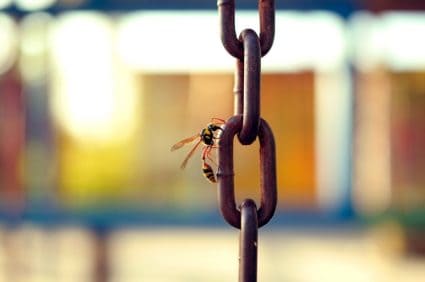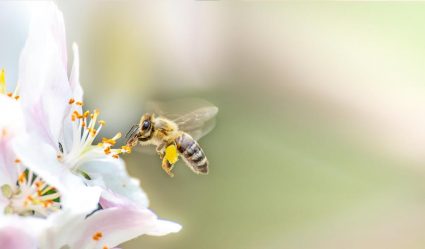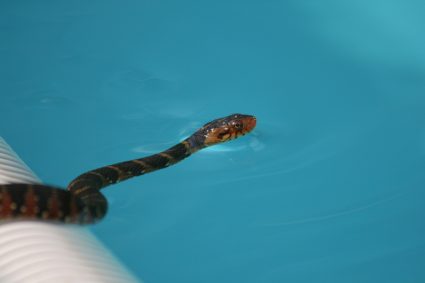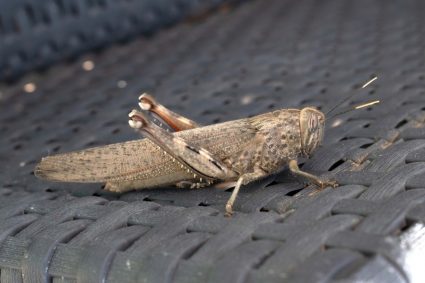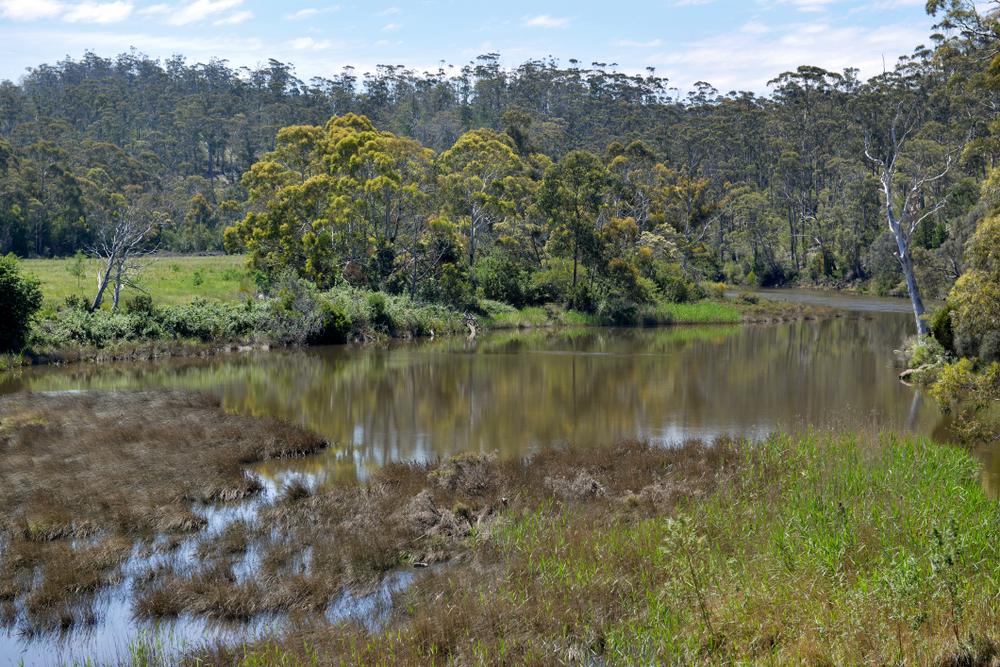
Green tree frogs are fascinating creatures with vibrant colors and intriguing behaviors. One question that often arises from curious minds is, “Where do these creatures go during the day?” To answer this question, we’ll delve into the daily routines, behaviors, and adaptations of green tree frogs.
During the day, green tree frogs typically spend their time sleeping in moist, shady areas, such as the undersides of leaves. Their bright green coloration allows them to camouflage with the surrounding foliage, aiding them in avoiding predators. Factors like temperature, moisture requirements, predators, and habitat preferences influence their daytime location. They are primarily nocturnal creatures, being most active during nighttime hours.
Biological Background and Habitat
Green tree frogs are medium-sized amphibians, typically measuring 1.25 to 2.5 inches in length. Their color can range from bright green to greenish-gray or yellow-green, depending on factors such as temperature and activity. They have long limbs, long digits, and sticky toe pads that help them cling to plants.
They are native to various regions, including the American Green Tree Frog (Hyla cinerea) found in the central and southeastern United States, and the Australian Green Tree Frog (Litoria caerulea) found in Australia. They inhabit areas with abundant vegetation and water sources, such as marshes, wet prairies, cypress swamps, and the edges of lakes, ponds, and streams.
Daytime Habits of Green Tree Frogs
During the day, green tree frogs typically spend their time sleeping in moist, shady areas, such as the undersides of leaves. Their bright green coloration helps them camouflage with the surrounding foliage, making it easier for them to hide from predators during the day.
Unique Adaptations for Daytime Survival
Green tree frogs have several unique adaptations that enable them to survive in their chosen daytime locations. These include their bright green camouflage, sticky toe pads, nocturnal behavior, specialized hearing, and color-changing abilities. These adaptations allow them to effectively hide and rest during the day, conserving energy for their nocturnal activities and avoiding predators in their chosen daytime locations.
Daytime vs. Nighttime Behavior
Green tree frogs exhibit different behaviors during the day and night. They are primarily nocturnal creatures, meaning they are most active during nighttime hours. At night, male green tree frogs are especially active and vocal, calling to attract mates and advertise their location. They are also more likely to be seen at night in quiet areas, often around porch lights where they can feed on the insects attracted to the light. During the day, green tree frogs are less active and tend to sleep in moist, shady areas. Their bright green coloration serves as effective camouflage, helping them avoid predators during the day.
Seasonal Changes in Behavior
The daily routine of green tree frogs changes with the seasons. During the warmer months, they are generally more active, especially at night. They tend to breed during the summer months, with males calling to attract females. In the colder months, green tree frogs enter a state of hibernation or torpor to survive the harsh conditions. They slow down their metabolism and burrow under leaf litter, logs, or tree cavities to protect themselves from freezing temperatures.
Safety from Predators
Green tree frogs keep themselves safe from predators during the day by relying on their camouflage and hiding in moist, shady areas. Their green coloration helps them blend in with the bushes and trees, making it difficult for predators to spot them.
Factors Influencing Daytime Location
Several factors can influence the daytime location of green tree frogs, such as temperature, moisture requirements, predators and threat avoidance, and habitat preferences. During the day, green tree frogs are usually resting and conserving energy, as they are primarily nocturnal creatures. They may be found in shady spots in trees or on the forest floor, as well as in tree hollows or other enclosed spaces.
Impact on Life-cycle and Ecology
The daytime behavior of green tree frogs contributes to their survival and overall life-cycle. Their nocturnal activities, such as foraging for insects and breeding in permanent water bodies, play a crucial role in their ecology and the ecosystems they inhabit.
Reproduction
Green tree frogs reproduce through a process called amplexus. Their breeding season typically occurs from March to October in warmer areas and from April to September in milder climates. Females lay approximately 400 eggs, hidden among aquatic vegetation. The eggs hatch into tadpoles within four to fourteen days, eventually transforming into adult frogs.
In conclusion, green tree frogs are remarkable creatures with unique adaptations that enable them to survive and thrive in their environments. Their daytime behaviors and locations play a crucial role in their life-cycle and ecology. Whether they are hiding under leaves, sleeping in shady spots, or changing colors to blend in with their surroundings, these frogs have fascinating ways of navigating their world.
Frequently Asked Questions
What do green tree frogs eat?
Green tree frogs are insectivores, which means they primarily eat insects. Their diet includes a variety of insects such as spiders, moths, roaches, and other small invertebrates.
How long do green tree frogs live?
In the wild, green tree frogs typically live for about 2 to 5 years. However, in captivity, they can live up to 6 years with proper care.
How can I identify a green tree frog?
Green tree frogs can be identified by their bright green color, along with their long limbs and digits, and sticky toe pads. They also have a smooth skin and a white or cream-colored stripe that runs from their jaw to their groin.
Do green tree frogs make good pets?
Yes, green tree frogs can make good pets for those who are prepared to meet their specific care needs. They are relatively easy to care for and can be quite entertaining to watch. However, they are nocturnal, which means they are most active at night.
Can green tree frogs swim?
Yes, green tree frogs are excellent swimmers. They often live near water bodies and their tadpoles are fully aquatic.
Are green tree frogs poisonous?
No, green tree frogs are not poisonous. However, they do secrete a substance from their skin that can cause irritation if it comes into contact with the eyes or mouth.

